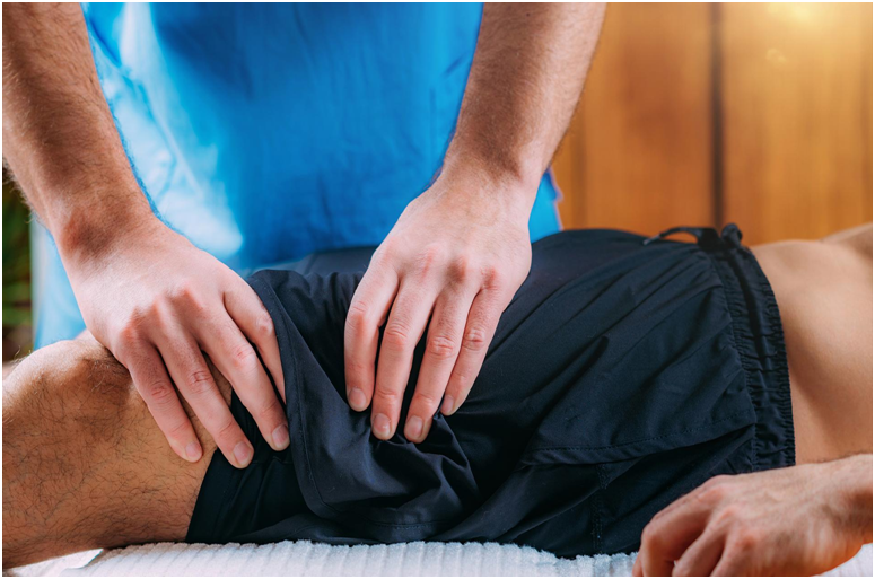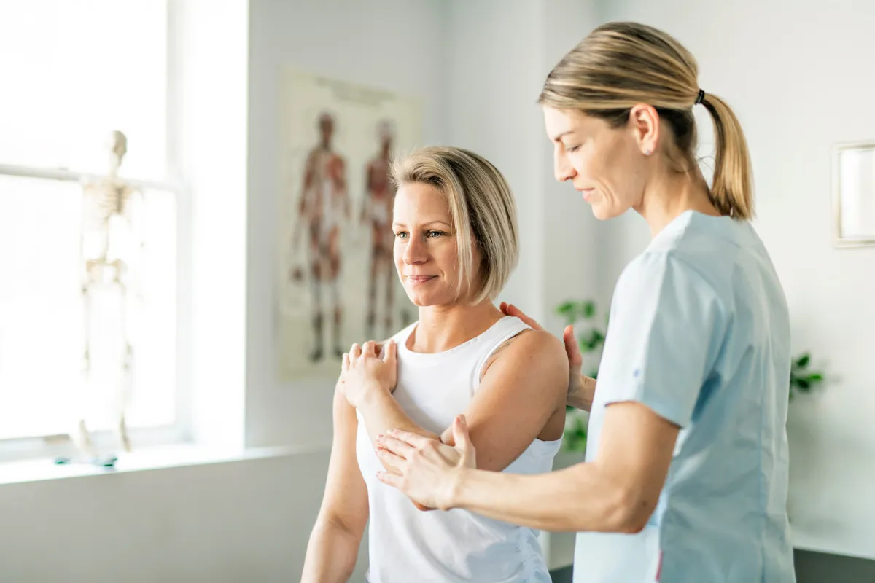Side Effects Of Muscle Massage Therapy:
Did you know that muscle massage therapy is not just a luxurious way to relax and pamper yourself? It helps to improve your overall health too. Many people believe that massage therapy is one of the best ways to maintain muscle mass. But what are the side effects of muscle massage therapy? Keep reading to find out.
What Is Muscle Massage Therapy?
Muscle Massage Therapy is a great way to manage your health condition or enhance wellness. Massage therapy is excellent for people with chronic conditions or general wellness needs and people looking to relieve stress post-workout. It works by manipulating the soft tissues of your body and can relieve pain, among other benefits!
It has become massively popular in the past few years. Plus, there are many options one can choose from according to your needs. You can get a massage from someone who has had training, or you can buy the Best Massage Guns available in the market and massage your muscles at home.
What Are Common Side Effects Of Muscle Massage Therapy?
While mild side effects of the therapy are expected, more severe or rare problems may occur. There is some risk in undergoing muscle massage treatment due to how the therapy is administered. Some common side effects are as follows:
1. Aggravating An Older Injury:
Massage therapy is an excellent way for your body and mind, but it doesn’t always go as planned. To avoid the side effects of past injuries, you must relay any previous pain or discomfort to your massage therapist. If they are working on areas where this has happened before, then there will be no problem with their current skillset for handling such issues!
Massage therapies and the pressure associated with these methods can stimulate old wounds, so communication is important. If for no other reason than that, you may reignite or create new injuries yourself!
2. Bruising:
Bruising is a pretty common occurrence associated with muscle massage therapy. However, if you seek treatment from experienced professionals who can help avoid bruising during your session, this should not become an issue.
All clients need to discuss their ability to bruise easily or any other pre-existing conditions with massage therapists before any further treatments begin to prevent complications like these! If you notice that the bruising is getting worse or lasts longer than a few days, then please seek help.
3. Fatigue Or Sleepiness:
Massage is a great way to relieve stress and tension, but it may lead you to feel tired or dizzy afterward. The soothing pressure on your muscles can cause relief by releasing some of the built-up pain they’ve been storing all day long!
When you release tension in the body, it can reduce stress and make your mind feel more relaxed. The effects of sleepiness are only temporary, though, because they will wear off after just one good night’s restful sleep!
4. Headaches And Migraines:
Headaches are one of the less common side effects experienced after massage therapy, but they’re still not something to worry about. There are a few possible reasons for your head pain.
You might have head pain due to the position of your body during a massage or induced a headache from other painful areas in the pressurized zone if you were massaged on the neck or upper back. The release of tension in the muscles near your skull can also cause headaches.
5. Inflammation:
Inflammation is a common result of constant stimulation during therapy. Otherwise, it can be due to an older injury or excessive pressure applied by the therapist or client when doing exercises improperly, leading to more pain than necessary for the healing process (this would more commonly happen with beginners).
Inflammation is a natural body reaction to help protect us from injury or infection. It should go away within 3-5 days, but if you’re experiencing pain with your inflammation, then apply ice packs and take low doses of prescription medications as they can help relieve symptoms associated with this condition.
6. Lingering Pain:
In some cases, people have reported feeling intense pain during or after their massage session. This could be due to the pressure used in these techniques, which causes discomfort with certain individuals’ bodies because they are susceptible more so than others, especially for people who have had previous injuries.
While this may seem alarming, it is a rather common side effect of massage treatments. The movement and friction in muscle fibers cause stimulation that can often lead to pain states for people who have trigger points or other similar conditions!
However, if the pain you experience lasts more than a few days, it’s worth checking with your therapist or general practitioner for advice.
7. Muscle Aches Or Fatigue:
The after-effects of a massage are usually felt in the form of soreness and relaxation. The muscles will feel less tight, leading to fatigue or pain if not appropriately treated by an appropriate rest period. Any pain, discomfort, or other symptoms that you feel after your appointment should only last a few days.
8. Nausea:
While not considered an average response of massage therapy, nausea can sometimes occur after treatment to release toxins from your body. This is due to how much stress and tension you carry around with us each day – even when we’re not aware!
Massage therapy is a great way to release toxins from your body. However, it’s crucial not to overdo the sessions and give yourself time between them to eliminate any additional issues with restful sleep or drinking water while resting!
9. Skin Redness Or Heat:
When you get a massage, it is common for the skin to become red and irritated. This usually isn’t serious, though; just let your therapist know if this happens so they can offer some relief!
This form of massage intends to apply pressure, which can result in such effects. Furthermore, the feeling of heat could be a good sign showing muscles reacting positively and beginning to heal themselves. It shows that something massages well-they are happy with their treatment!
When To Avoid Using A Massage Gun?
Massages may help relieve stress and tension, but not just any type of touch will work in your favor. There are some specific cases where massage guns should be avoided, like the plague, because their use could lead to complications or, even worse – health problems for you! Here are some of those cases where you should Avoid Using A Massage Gun:
1. A Blood Clotting Disorder:
Massage therapy in case of a clotting disorder is contraindicated because it may dislodge the clot, which could send them through our circulation where they would lodge in one’s lungs, causing a pulmonary embolism, a life-threatening condition.
2. Any Recent Surgery Or Chemotherapy:
Massage can be quite dangerous and risky if a client has recently undergone chemotherapy or surgery. It could tear stitches in the healing process of an injury if done wrong, which would make things worse for them!
3. Biceps Tendon:
In severe conditions, massaging your biceps tendon excessively can lead to a disease called tendonitis.
4. Broken Bones:
Patients with broken bones should avoid any form of hammering, including massage gun therapy. It can cause the newly mended bone to fracture or break, and this would be harmful to them in their healing process.
5. First Rib:
Directly under your first ribs, there’s an entire system of nerves and blood vessels, which can be compressed by pressure from too much massage gun therapy in this area!
6. Greater Trochanter:
Greater Trochanter is a pretty important area because it can get inflamed easily. The friction from the massage gun will create pain and inflammation in this spot, making it hurt even more!
7. Inflammation Injuries:
When the body becomes injured, inflammation can start to set in. This means that massage gun therapy might not be recommended for these patients.
8. Kidneys:
Kidneys are located in the back, which makes them particularly susceptible to organ damage due to massage gun therapy.
9. Spine:
When massaging your spine with a massage gun, there is an increased risk of irritating nerve roots and discs.
10. Sprains:
When massaging an area that has undergone known sprain, avoid using massage gun therapy as it may cause further injury.
11. Strains:
Massage gun therapy should be avoided when a patient has injured their muscle with a muscle strain. This can cause further harm and discomfort!
12. Wounds Or Skin Conditions:
There is a chance your massage therapist could contract your skin infection. Open wounds have also been known to become inflamed and infected when administered with massage gun therapy.
Conclusion:
Muscle massage therapy has many potential benefits, but it’s important to be aware of the side effects before you begin treatment. We hope this article has helped you understand what muscle massage therapy is and how to use it safely and effectively. If you’re looking for a quality massager gun, we recommend checking out our top picks. Thanks for reading!



